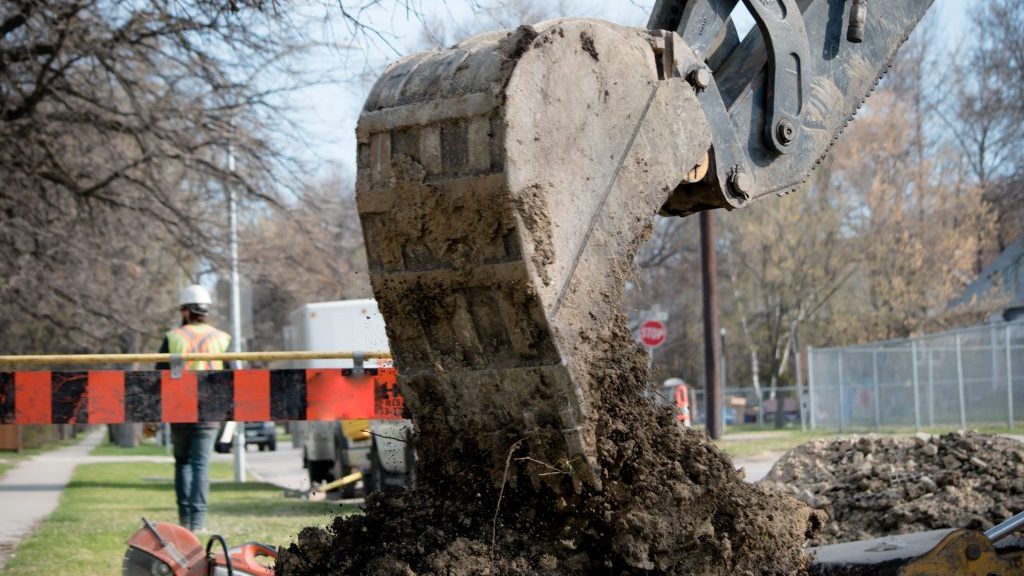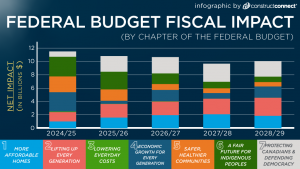There’s been a lot of debate recently about the role of infrastructure investment in stimulating the economy. Concerns have been expressed that rushing megaprojects increases the likelihood of building “white elephants.”
While this is a valid concern, governments should be providing targeted infrastructure funding to support smaller municipal projects. There is no excuse for dithering on this as such projects build up our communities and provide more immediate economic stimulus.
Mayors of Ontario’s largest municipalities are urging the federal and provincial governments to provide immediate funding for infrastructure projects, as COVID-19 has created revenue shortfalls that will prevent them from doing state-of-good-repair (SOGR) work on key pieces of infrastructure.
Thousands of local projects in communities across Ontario (and Canada) are both “shovel ready” and “shovel worthy.” These are approved and ready to go to tender.
If we are to achieve the maximum benefit of infrastructure investment, however, stimulus programs will need to heed the lessons learned from the past. For instance, the federal stimulus program that followed the 2008 financial crisis was emblematic of the previous approaches to infrastructure stimulus programs.
All the projects that were funded by Canada’s Economic Action Plan had to be new. Municipal projects that were already on the books were ineligible. Even though some worthy projects were funded, many others offered nebulous economic or social benefits. Years later, contractors and local governments complained they were engaged in repaving roads that still had many years of useful life left just because these were quick to approve.
Fortunately, since then the Ontario government has implemented requirements for the municipal sector to conduct asset management planning. As a result of these requirements, the majority of local governments in Ontario now have three years worth of approved public works projects. These projects cover active transportation, roads and bridges, water and wastewater systems. Broadband is also being increasingly prioritized on this list of vital projects that will make people and businesses more connected and productive.
COVID-19 has complicated almost every aspect of public works. Municipalities of all sizes are facing a cash crunch. As a result, municipal tenders have been held back and the pipeline for basic or SOGR projects has started to dry up. The time has come to acknowledge that the current approach is not working.
Contractors in the civil and engineering sectors were recently surveyed about how COVID-19 was impacting their business. Two key findings were revealed. For industry, the recent spike in COVID-19 cases has made the health and safety of construction workplaces the top priority. Industry leaders are equally concerned about matters such as supply chain disruptions and the availability of skilled labour.
These firms confirmed that far fewer projects are available to bid on overall. Specifically, 56 per cent of firms surveyed said that there were fewer municipal projects across Ontario. For comparison, on a seven-point scale, a second wave of COVID-19 ranked at 5.5, whereas the ability of governments to quickly roll out infrastructure stimulus spending was slightly below at 4.7.
Studies by the Canadian Centre for Economic Analysis (CANCEA) have demonstrated that infrastructure investments enhance job creation and GDP. CANCEA’s analysis concluded it was possible to realize a gain of 61,000 jobs on average (0.9 per cent more on average), as well as $9 billion and $13 billion in federal and provincial government revenue over the next decade. This requires the federal and provincial governments to commit to investing the same amount in infrastructure as was planned pre-COVID-19. The federal government would also need to top-up Ontario’s capital budget, earmarked for municipalities, that covers 56 per cent of municipal operating deficits.
Time is of the essence. Ian Edwards, CEO of construction and engineering giant SNC-Lavalin, has emphasized the importance of speed and efficiency of funding programs if they are to achieve the desired stimulus.
Edwards pointed to the electrification of rail lines as a telling example of a “shovel ready” project. Metrolinx has been working for years to transition from diesel-powered commuter trains along the seven regional GO corridors but it is taking too long.
We agree that “white elephant” projects would be a monumental waste of resources at the best of times. Rather, it is critical that infrastructure stimulus funding is allocated to municipal capital projects based on solid evidence and supported by asset management planning principles.
Now is the time for senior orders of government to provide targeted infrastructure stimulus funding to support the long-term prospects of both the municipal sector and those who are helping to build our communities. Let’s get Ottawa and Queen’s Park moving quickly to help build and maintain important SOGR projects.
Andy Manahan is executive director of the Residential and Civil Construction Alliance of Ontario.
Scott Butler is executive director of the Ontario Good Roads Association.
Send comments and Industry Perspectives op-ed ideas to editor@dailycommercialnews.com.











Recent Comments
comments for this post are closed